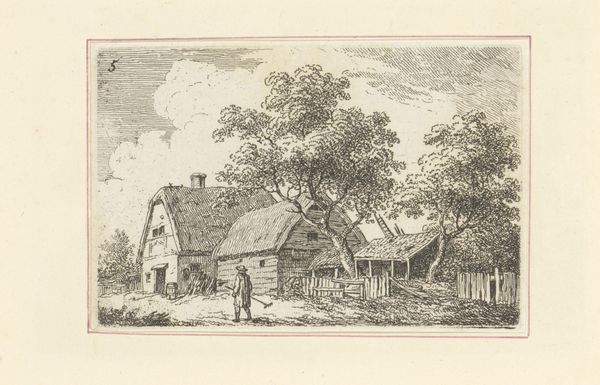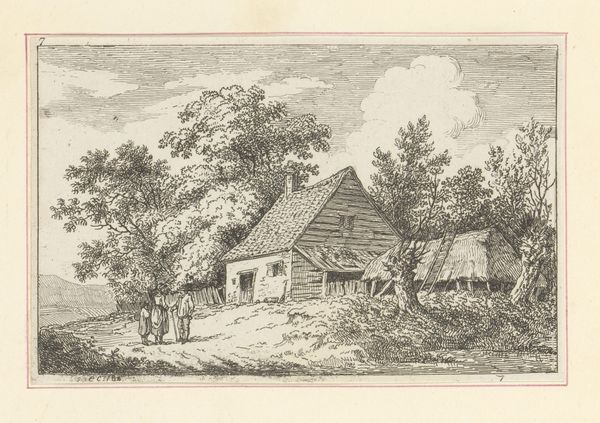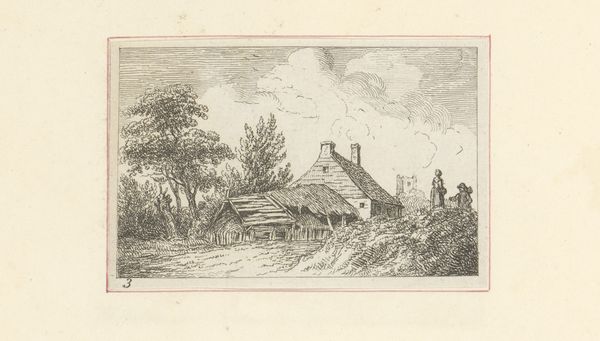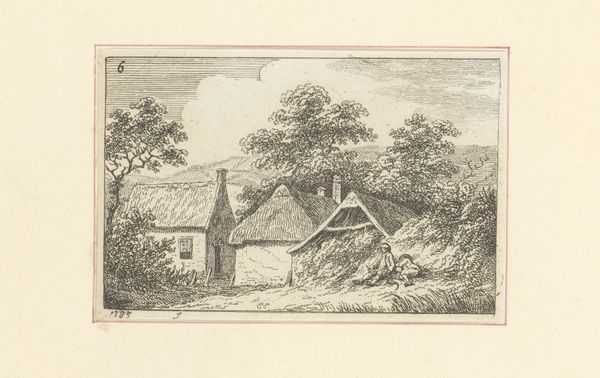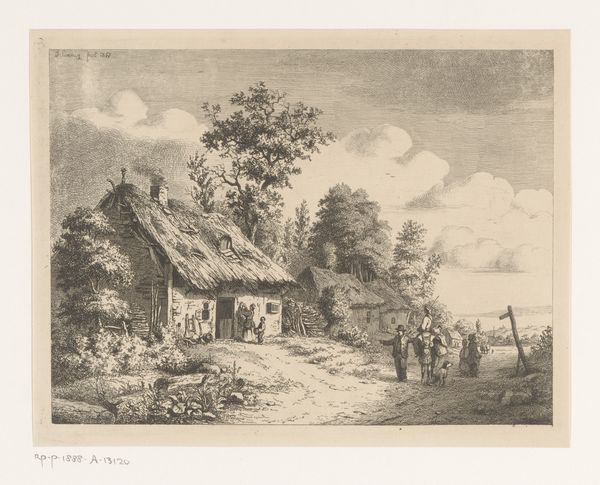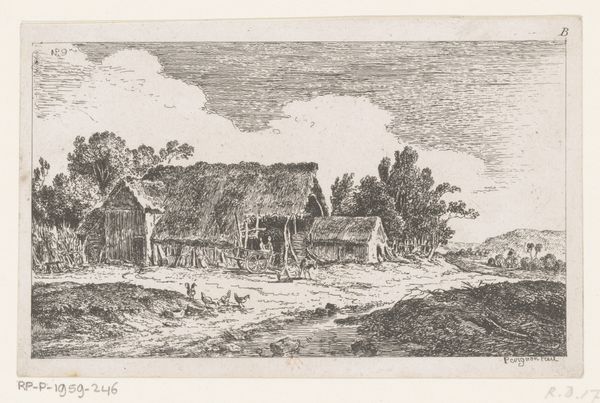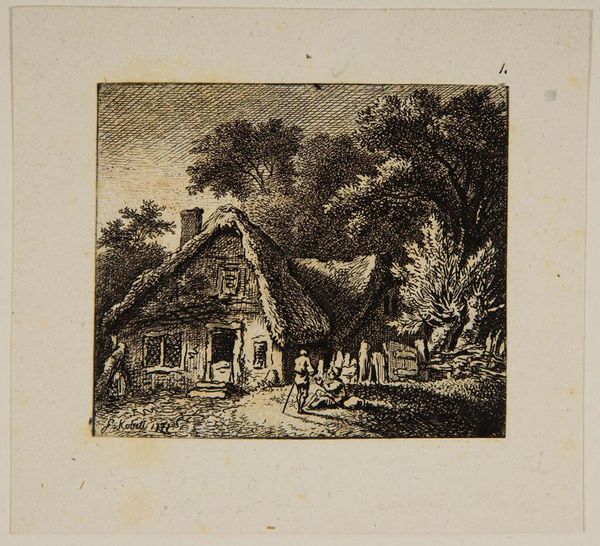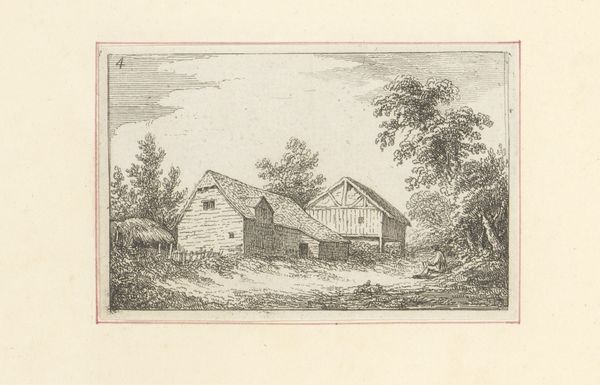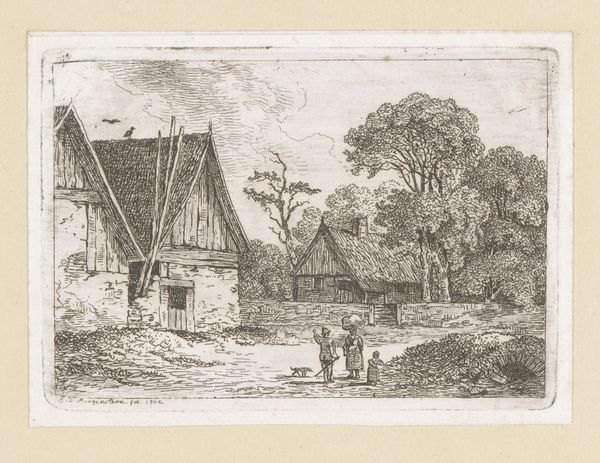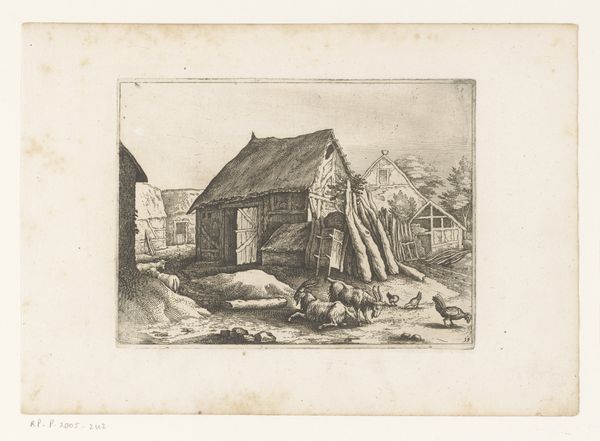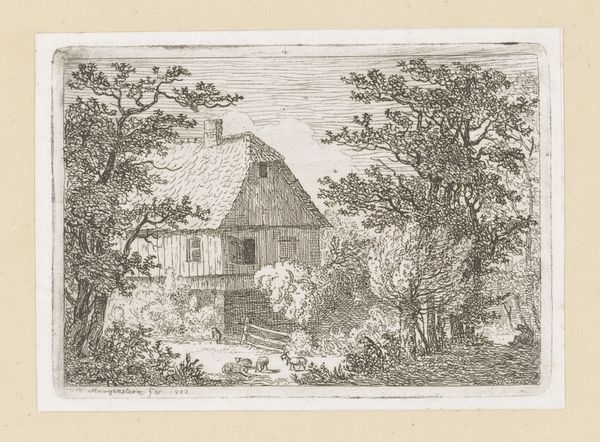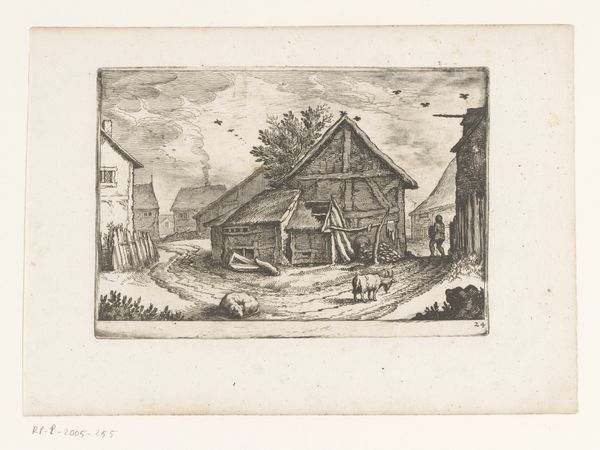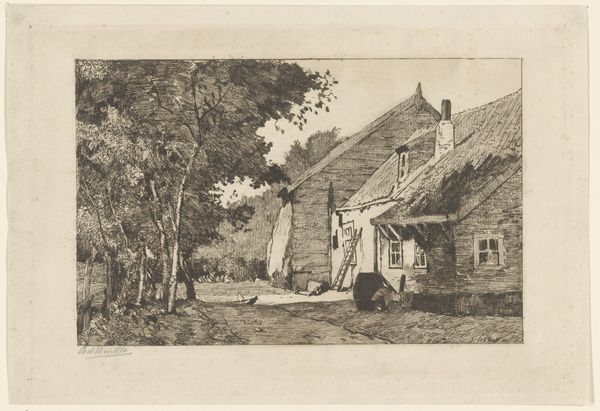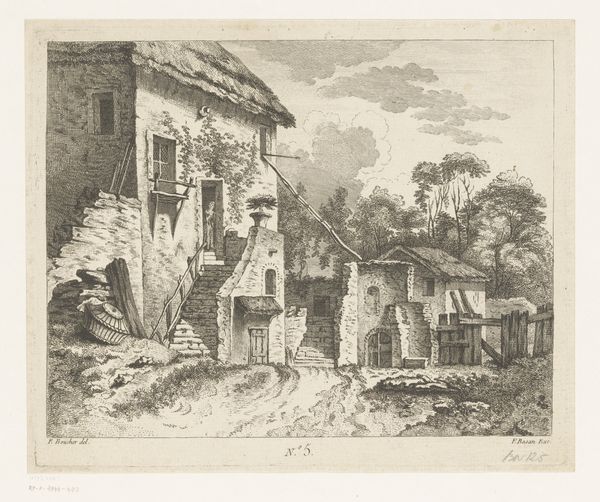
#
aged paper
#
light pencil work
#
parchment
#
old engraving style
#
retro 'vintage design
#
archive photography
#
personal sketchbook
#
old-timey
#
sketchbook drawing
#
storyboard and sketchbook work
Dimensions: height 62 mm, width 92 mm
Copyright: Rijks Museum: Open Domain
Edward Edwards created this etching of a "Landscape with Farmhouse" sometime in the late 18th century. Edwards lived during a time of significant social and economic change in England, as agricultural practices were being industrialized, leading to displacement and poverty for many rural communities. In this work, the farmhouse and its inhabitants are portrayed through a romanticized lens, reflecting the idyllic vision of rural life often presented by artists for urban audiences. The figures in the foreground are generalized, without distinct facial features, representing an idealized image of the rural worker. Edwards' portrayal of the farmhouse and its inhabitants can be understood within the context of the picturesque movement, which promoted an aesthetic appreciation for the rural landscape. But it's also important to consider the power dynamics at play in these representations. Who is invited into this rural idyll and who is excluded? What are the historical and social implications of depicting the countryside as a place of beauty and tranquility, while ignoring the realities of labor, poverty, and social inequality that shaped the lives of the very people who lived there?
Comments
No comments
Be the first to comment and join the conversation on the ultimate creative platform.
